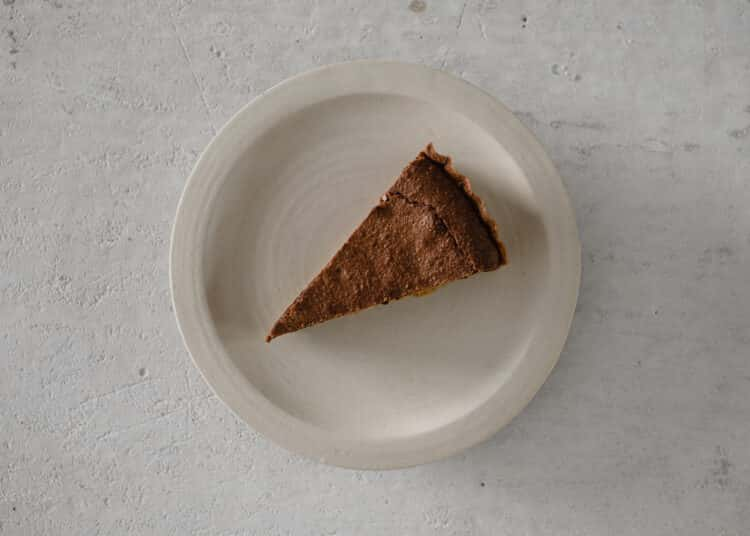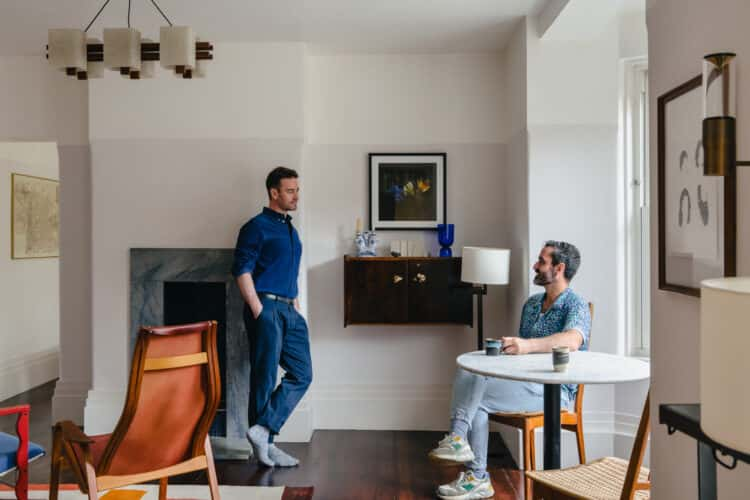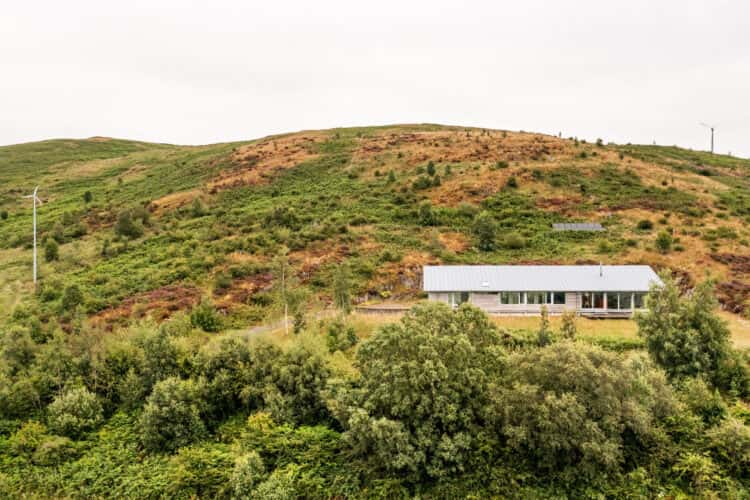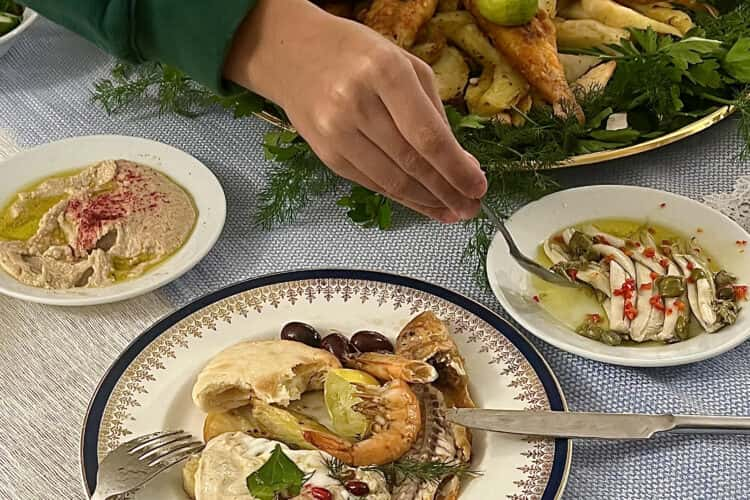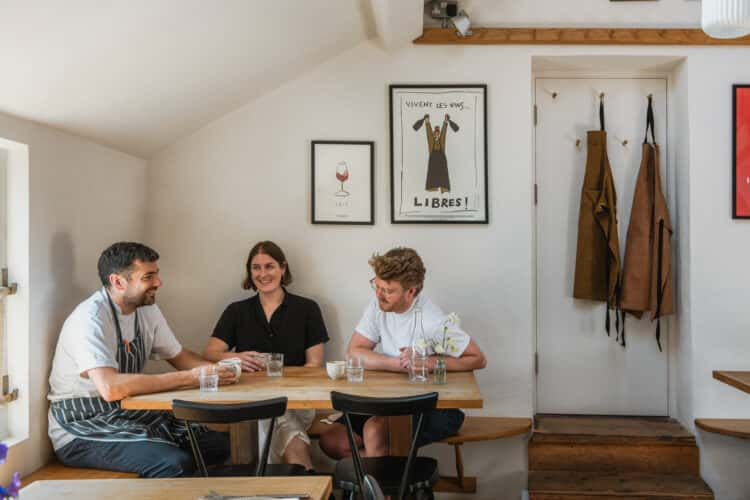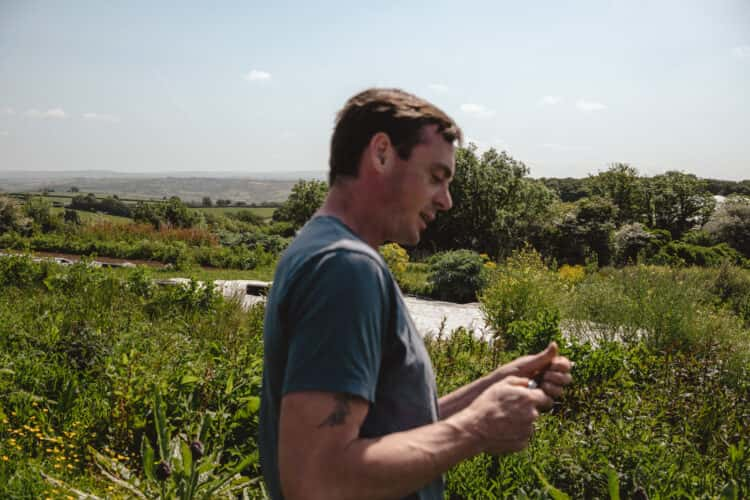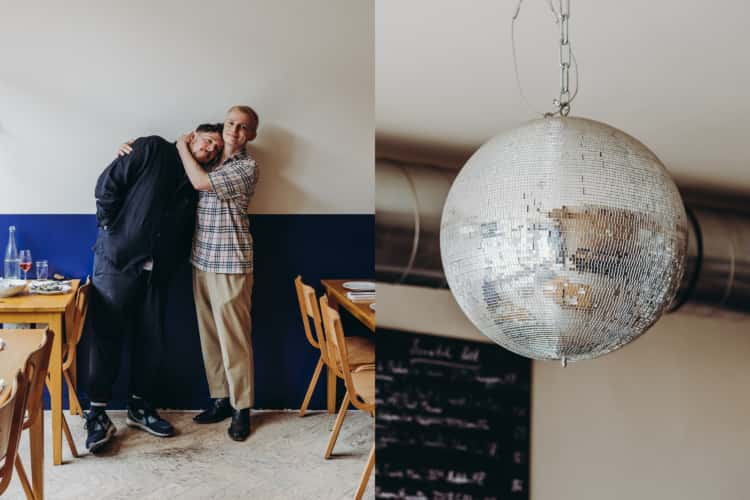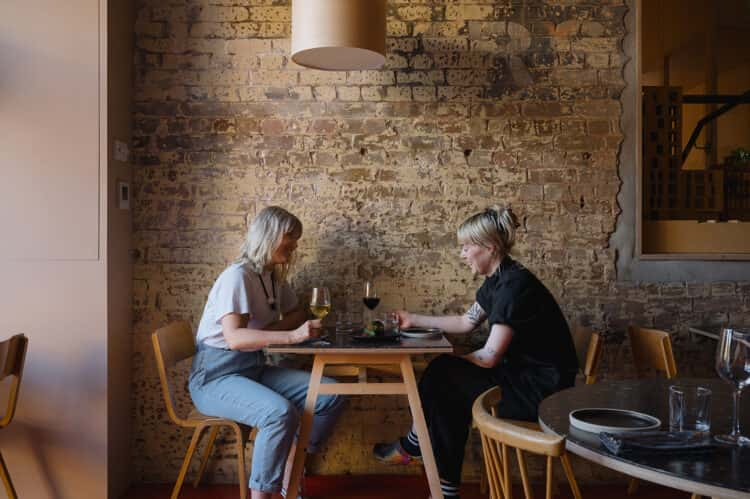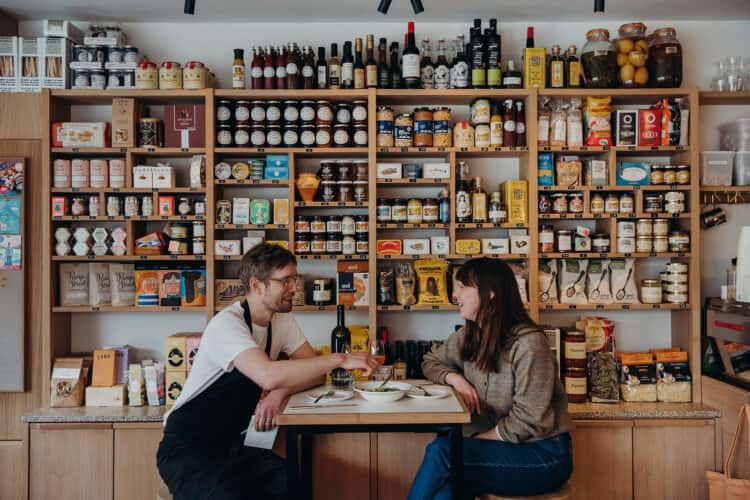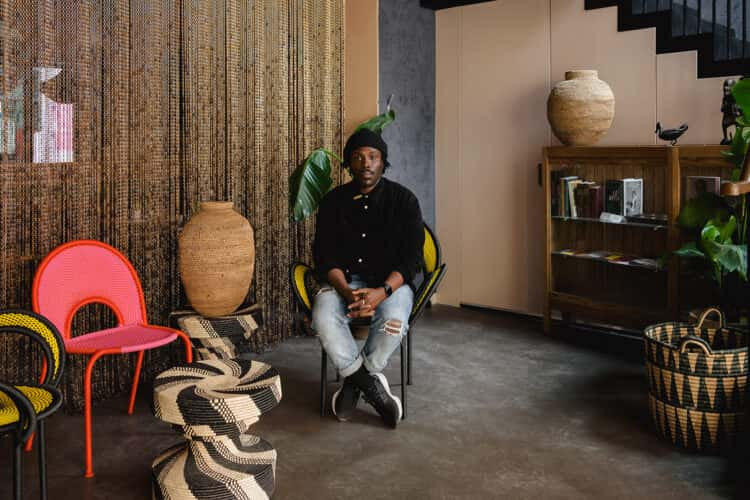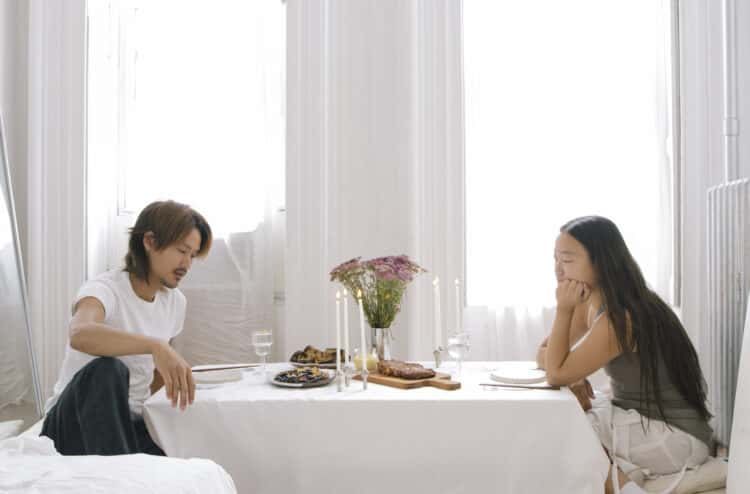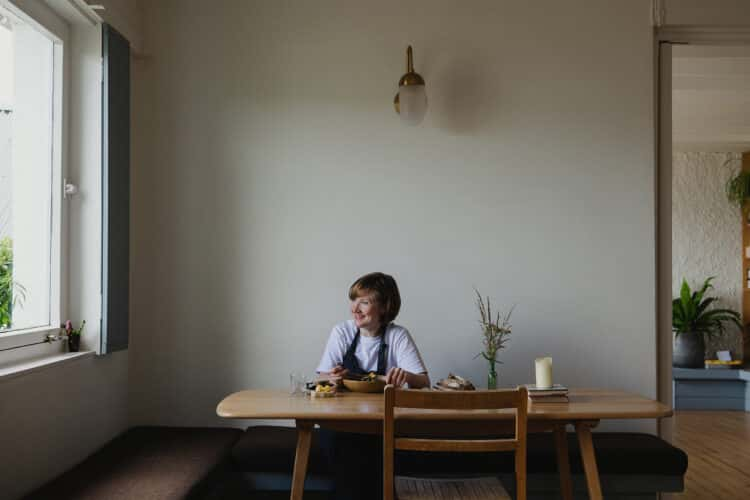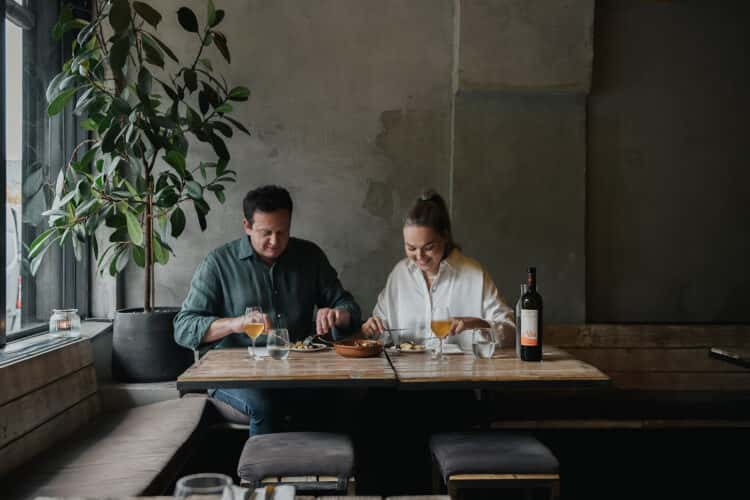How Alex Reynolds and Maria Viviani are paying homage to their heritages at Eline in Hoxton
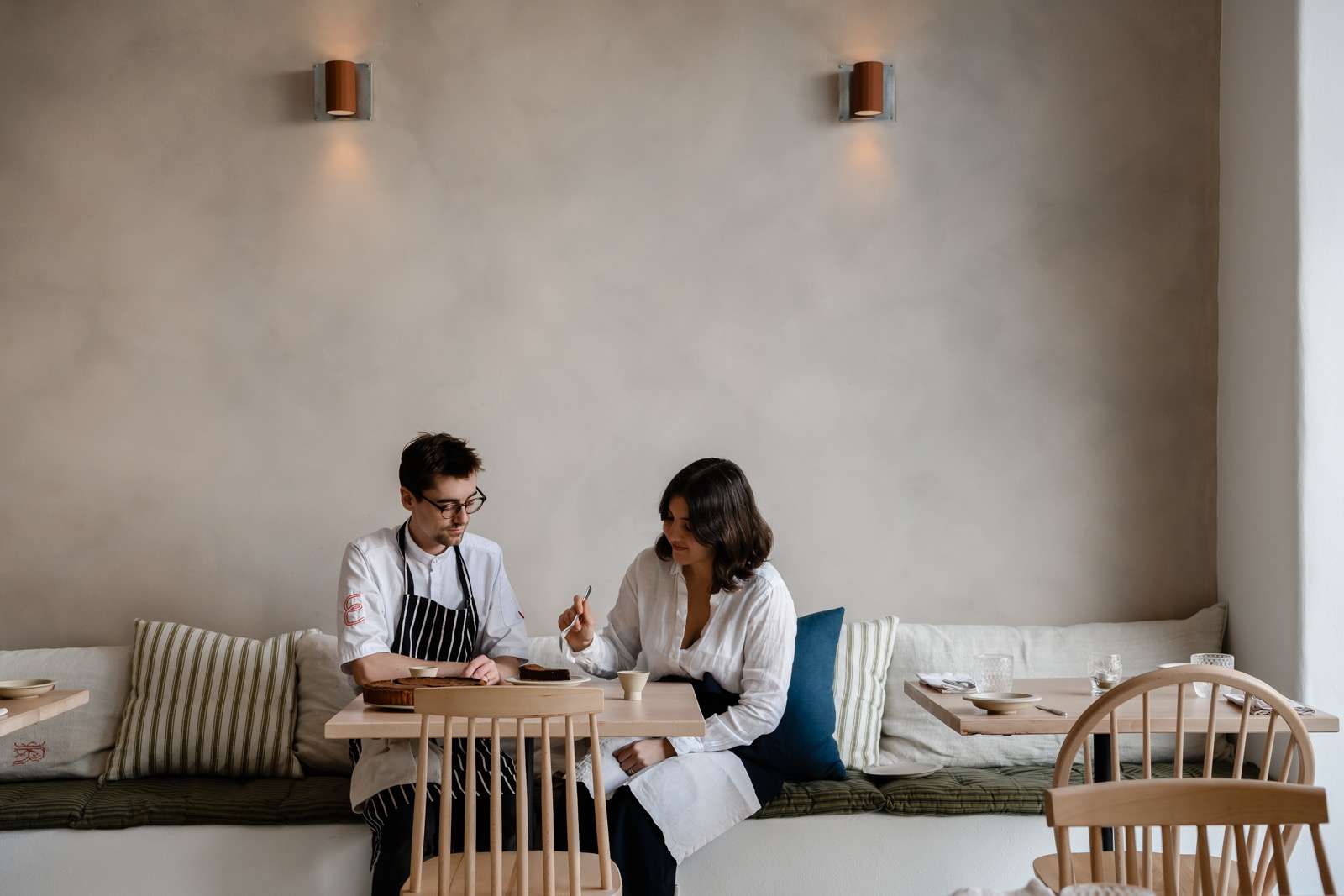
Words Billie Brand
Photography Elliot Sheppard
Production Harry Cave
Having opened in October 2022, Eline has established itself as a restaurant to know, serving thoughtful seasonal fare with expertly paired wine. But while the menu changes monthly, its influences remain the same. Dishes such as rabbit ballotine, for instance, draw on Alex’s upbringing – the chef grew up dining on locally sourced meat in the rural south of France, before cutting his teeth at Hide and Pophams. The small but mighty list of desserts, meanwhile, which often includes sabayon ice cream and a particularly delicate chocolate tart (read on for the recipe), pay homage to Maria’s family tree: her father ran a Willy Wonka-style candy and ice cream factory in Argentina – the stuff of any child’s dreams. She also frequented vineyards, where she developed a knowledge of wine at a young age. As the husband-and-wife duo explains, Eline is a meeting of both of their worlds.
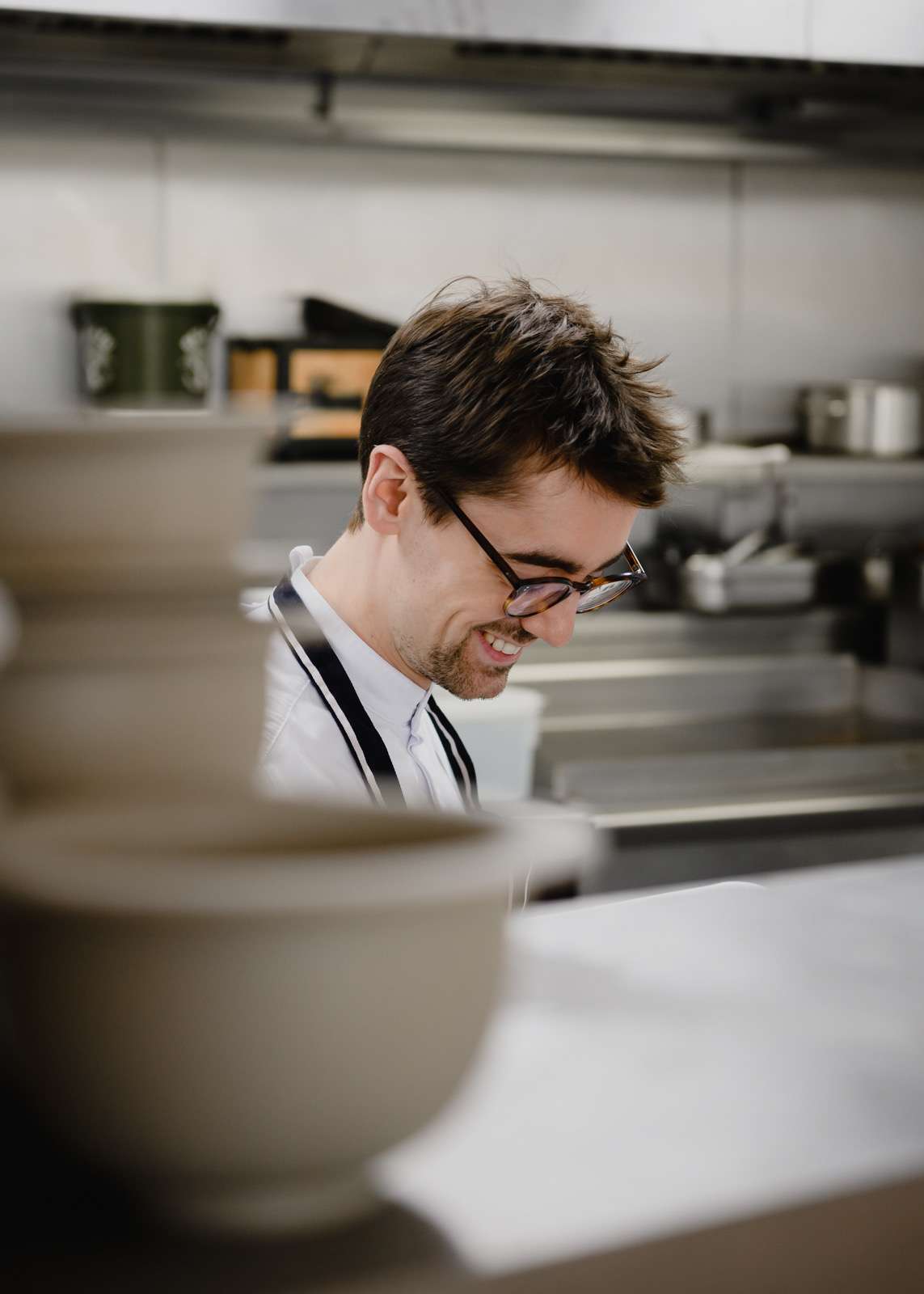
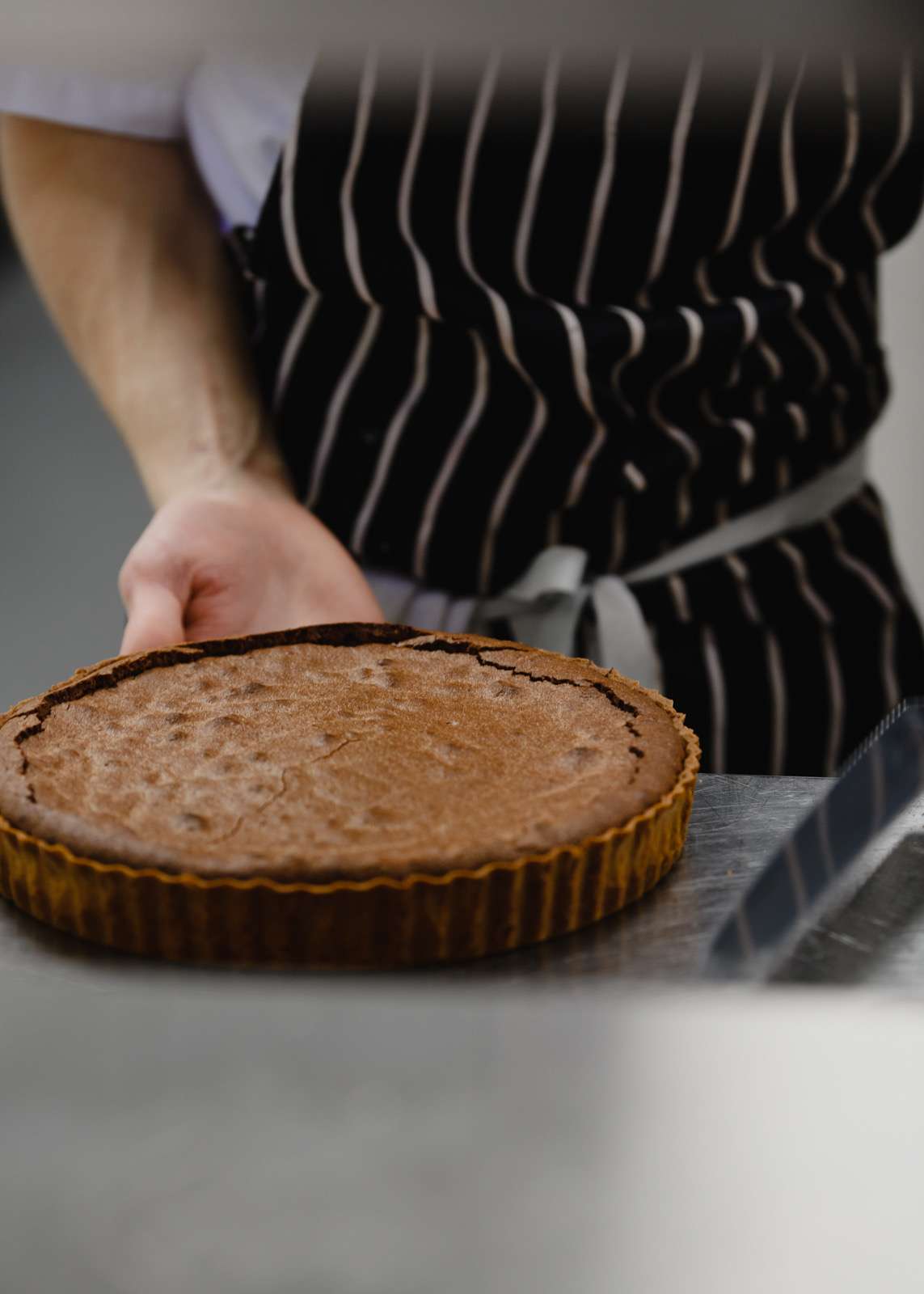
Alex: “My grandmother, Eline, was an excellent cook. She was a social worker by trade and would organise cooking classes for people in the workplace, supplying them with recipes sent to her by Michelin-starred chefs – Eline would handwrite letters to professional cooks, asking for them. And she would spoil me rotten. She was French and lived in Paris and would take me to old-school brassieres and beautiful restaurants. She was inspirational. Six months into my career as a chef, she said: ‘You should open a restaurant.’”
Maria: “I didn’t get to meet her, but Alex’s dad always says what a lovely lady she was and talks about all the great things she’d cook.”
Alex: “Between the ages of five and 10 I lived out in the sticks in the south of France. I remember one occasion when a neighbour knocked on the front door with a bag, dripping with blood, with a boar leg in it, which he thought he’d share with me and my family – things like that would often happen. We’d then soak the meat in wine for two days and end up with a melt-in-the-mouth dish.
“The kitchen at home was big but disorganised. James, my stepfather, loves cooking. When I was growing up, he had the most insane spice racks, a bread machine, an immersion circulator, a sous vide machine – we don’t even have one in the kitchen here! But my mum doesn’t cook at all, so I started at a young age. My signature dish was coq au riesling, a super simple French recipe: brown some chicken legs, throw in white wine and cream, cook it down and squeeze a bit of lemon juice on it.”
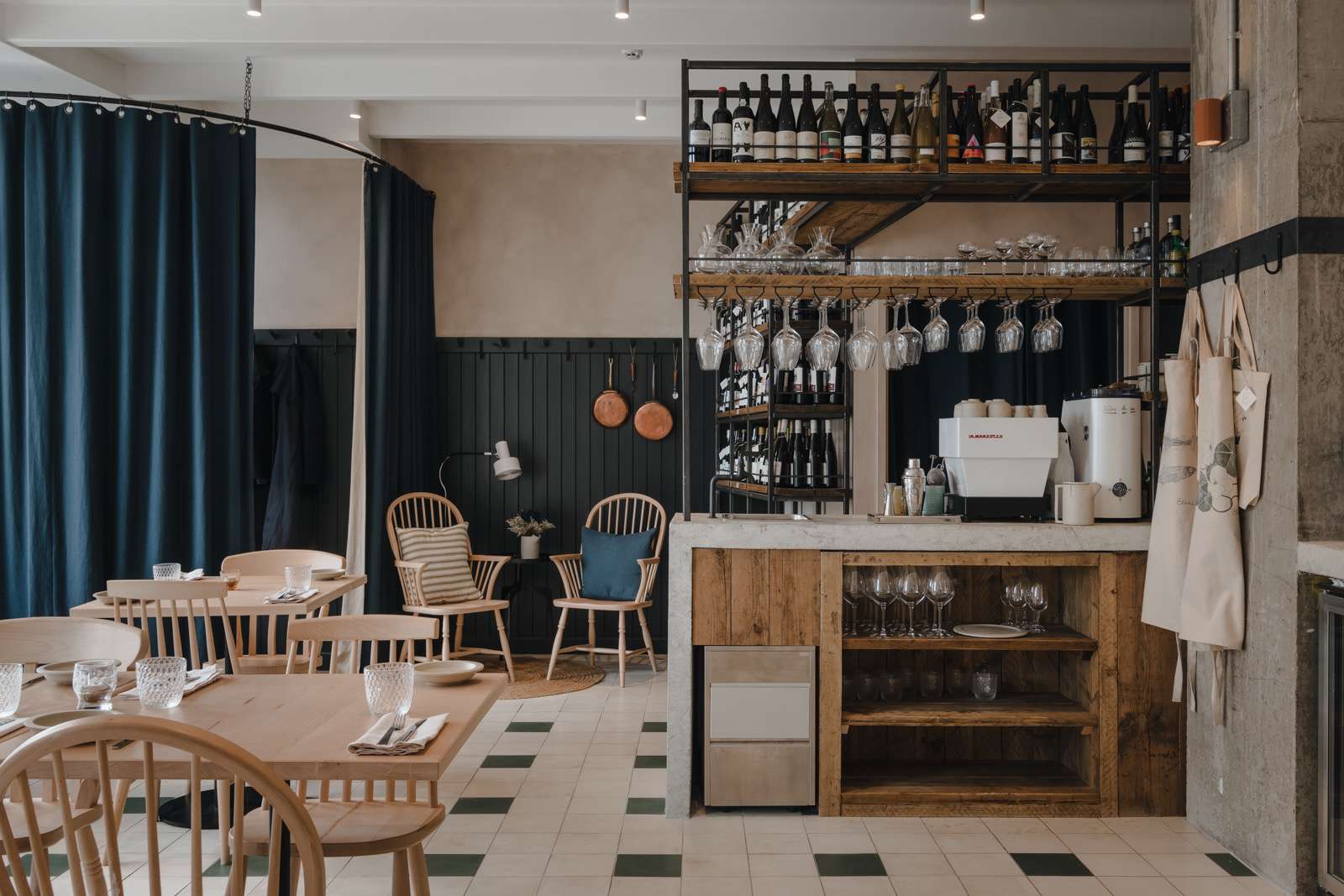
Maria: “I grew up in a small town in Argentina, though my parents have European roots. My mum’s dad was born in Spain, and my dad’s family is from Italy, though he was born in Argentina. When I was young, if we went out to eat, my dad always wanted pasta. There was a community from Friuli, north-east Italy, based near my hometown, with its own dialect and a restaurant that we’d go to almost every Sunday. The people there treasured a very traditional way of cooking.
“My family has a rich culinary history. They run a food company, which began as a bakery and then started making candy – we had our own factory. My dad was a food engineer and would develop sweet flavours. He later learned how to make ice cream and created his own line – the science behind it is so impressive. I don’t have a sweet tooth now, but I’ll always have a soft spot for ice cream. Perhaps it’s because of my Italian heritage, though Argentina makes good gelato too. Sabayon is my favourite flavour – my grandmother would whip it up after dinner for me.”
Alex: “We have it on the menu here. Maria’s dad was really helpful when creating it.”
Maria: “I always liked wine a lot too. Growing up, my family and I visited a lot of wineries around Argentina – I’ve been tasting wine since I was a child. However, I pursued baking and pastry at culinary school. Learning how to make sourdough blew my mind – the fact it’s alive and you have to look after it like a baby.
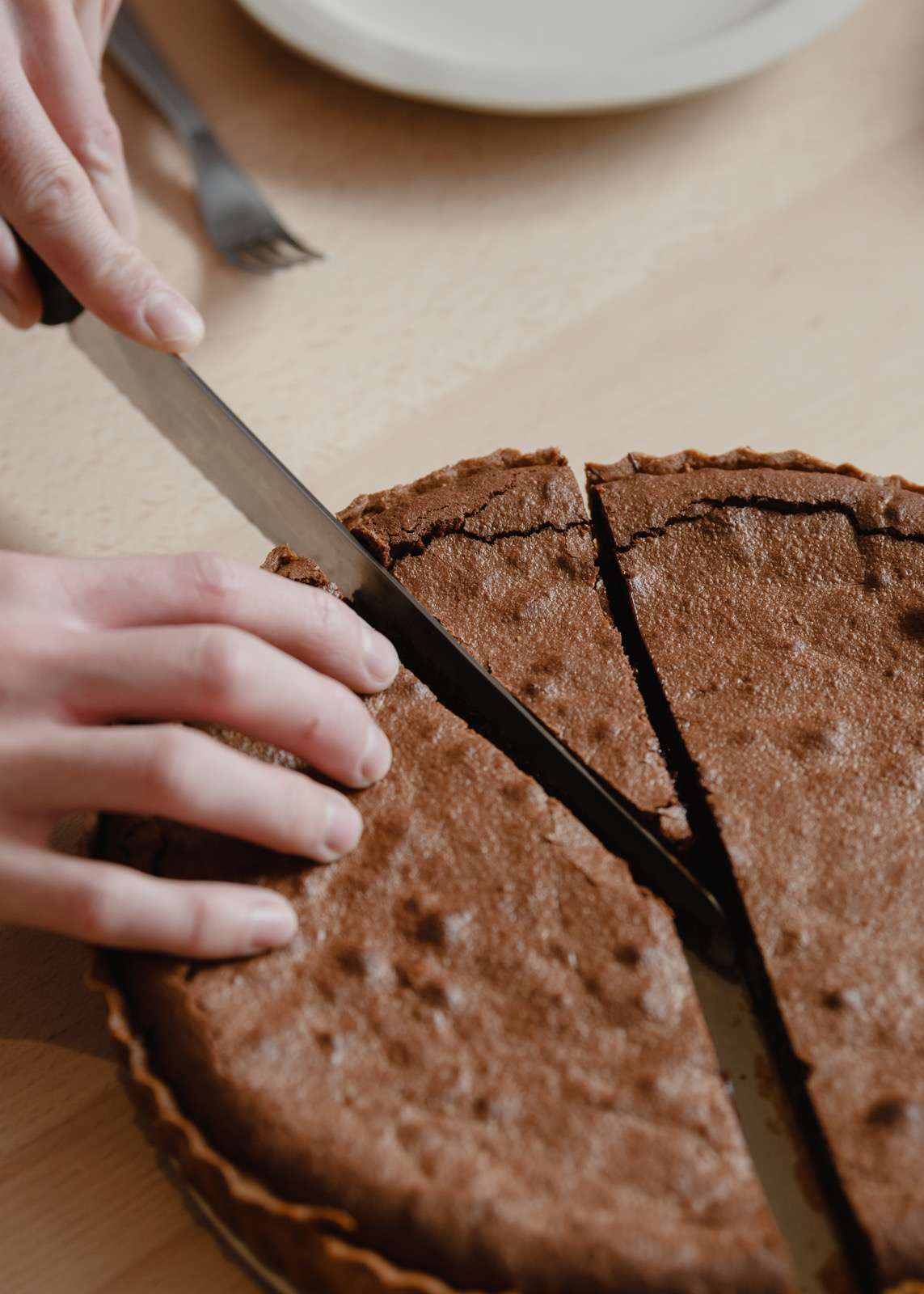
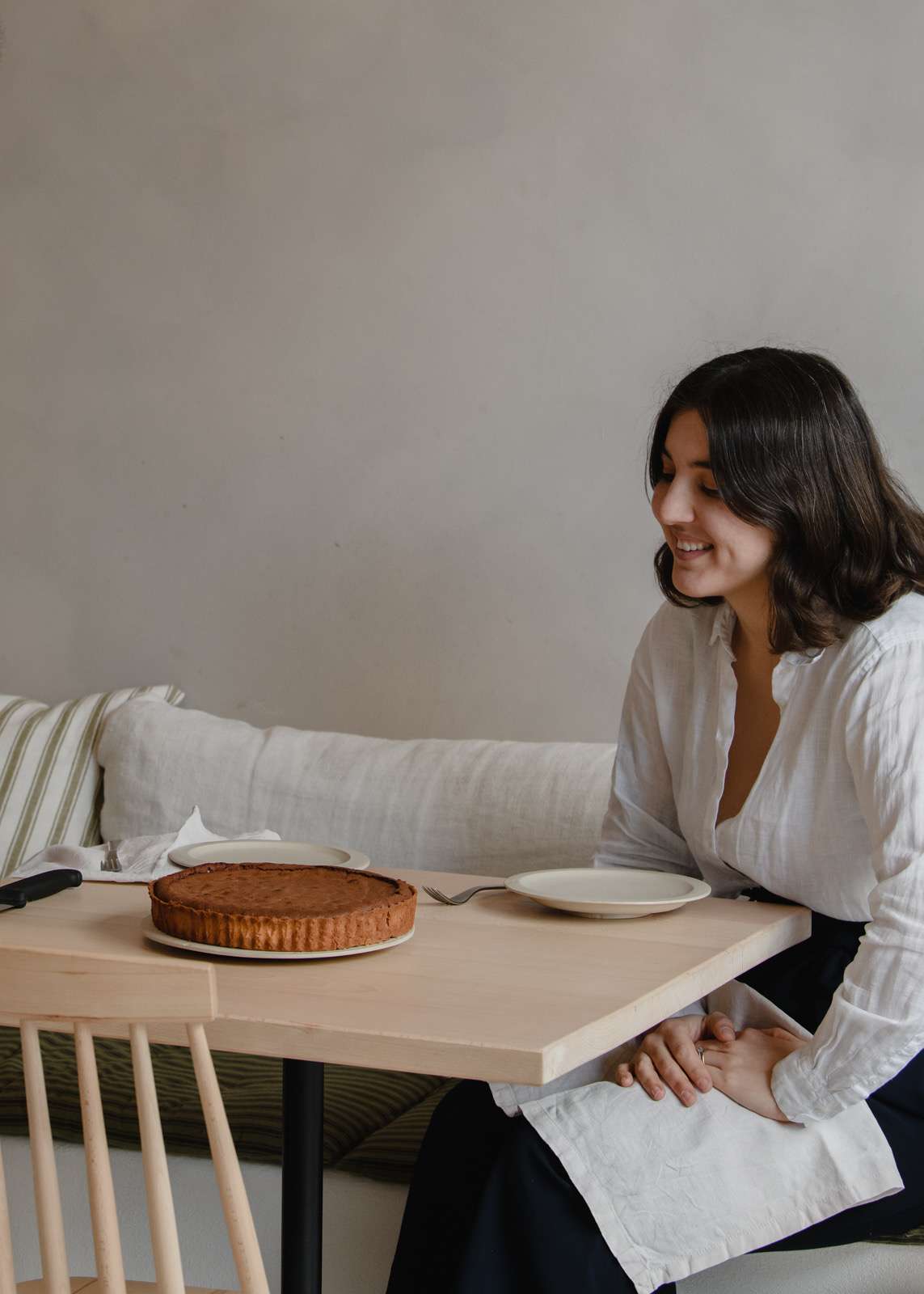
“Alex and I met just before the first lockdown and we ended up spending the whole of it together. I moved to Italy to spend time with my family there and Alex decided to follow. That’s when we first had the idea of opening a restaurant. When we came back to the UK, we worked at Popham’s together – I was baking and Alex was a chef.”
Alex: “That was great while we were trying to find a space for ourselves. The way they make pasta and dough there is really cool. I watched and learned as much as I could.
“With Eline, we wanted to create somewhere that’s nice to work in. There’s no old-school hierarchy in the team, for instance, and the restaurant itself is bright and open. Before we moved in, the space was a blank concrete box. We’ve had 100 per cent creative control, which has been fun.”
Maria: “We would have loved an old shopfront because they already have a lot of character, but we compromised to get this space. We worked with design agency Not Limited on the layout and were very clear about what we wanted it to look like. We didn’t even need to see paint colours. The build and interiors work took about three months.
“The ceramics, which we serve our food on, are made by an artist called Martina Geroni, who is from Lodi, a town near Milan. We discovered her while we were living in Italy. The crockery she makes for us is so lovely. It looks special but also like it could belong in someone’s home, rather than a restaurant, which was the idea. We want people to feel comfortable and relaxed here.
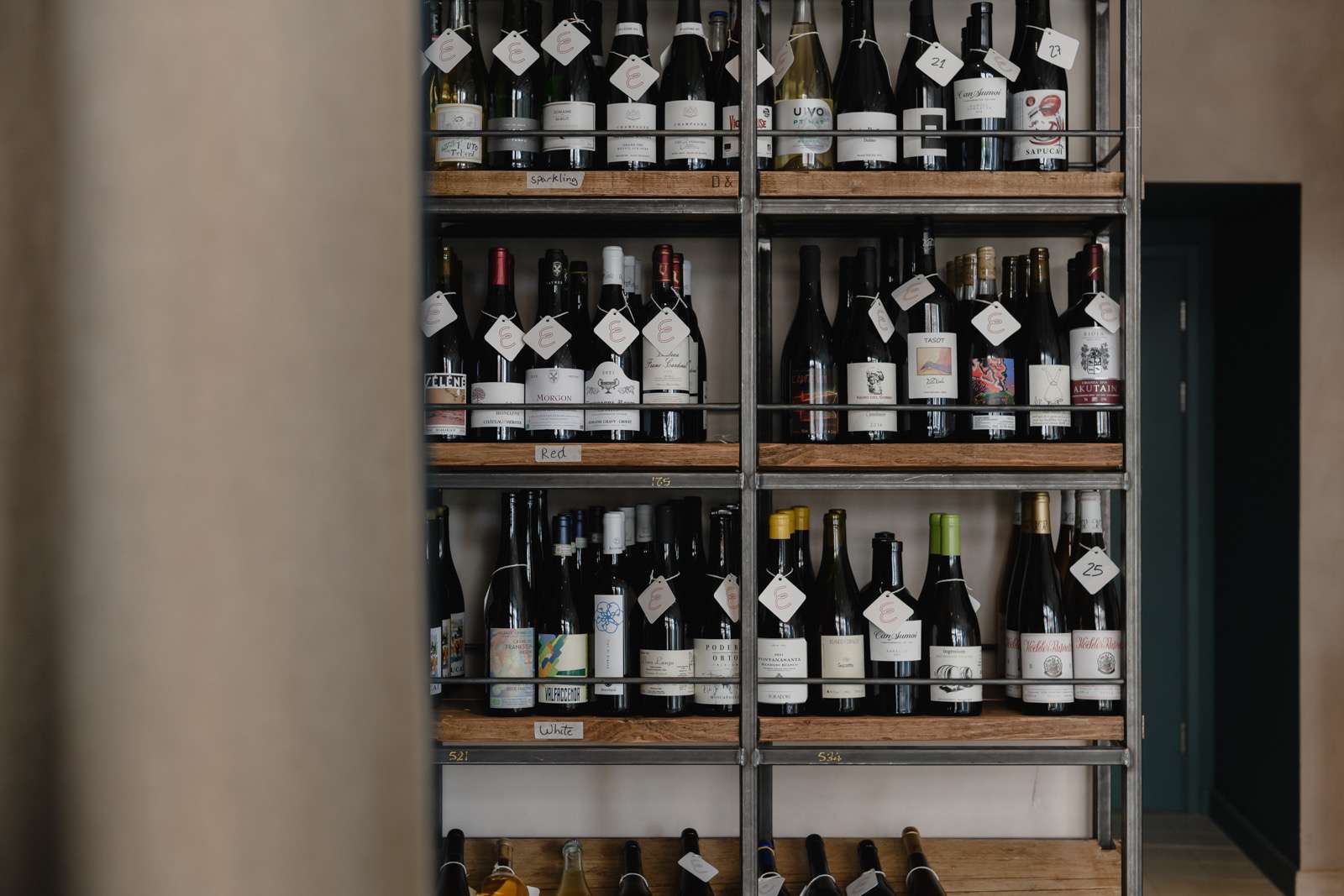
“We worked with my friend Milagros Brascó, who is also from Argentina, on the illustrations for our branding. She also designs bottle labels for local wineries back home. She was delighted to be a part of this project – not just because she’s my friend, but because she likes the concept, aesthetic and Alex’s food. We were inspired by old British cookbook illustrations, but we wanted to make ours a bit more modern, with soft lines and colours.
“Milagros also designed the ‘E’ label for the wines in our bottle shop. We attend a lot of wine tastings to discover new releases or producers. That’s how you build up your wine knowledge: you taste and taste and taste. You realise what you like, what’s lacking on your list… It’s a lot of fun. I love French wine – Jura is one of my favourite regions for it.”
Alex: “When it came to food, I wanted to create the tastiest menu I possibly could at a reasonable price – somewhere I could afford to come once a month, for example. My approach to cooking is not overly complicated and is inspired by what’s in season. A dish that’s gone down particularly well with the customers is a chicken-liver parfait, which we whip with cream so it’s easily spreadable on bread.”
Maria: “And the chocolate tart…”
Alex: “People now order it to take away. We’ve had a brilliant response from our customers – we even have regulars now, which is lovely.”
Maria: “The first few months of being open were a challenge – we’ve been learning how to run a restaurant as we go. But even though it’s been difficult and has taken a lot of hard work to get here, it’s been very satisfying to see our ideas and dreams come to life.”
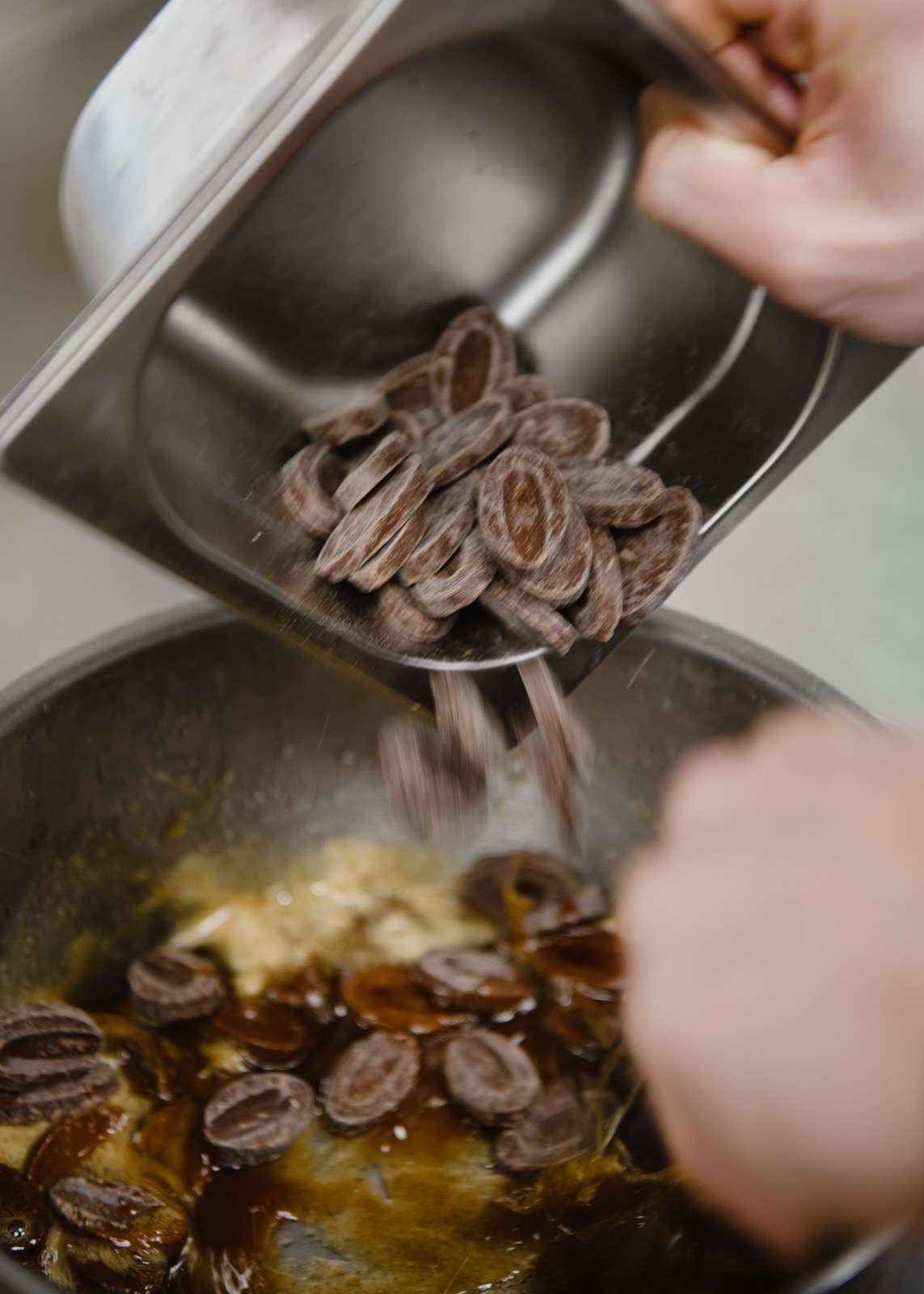
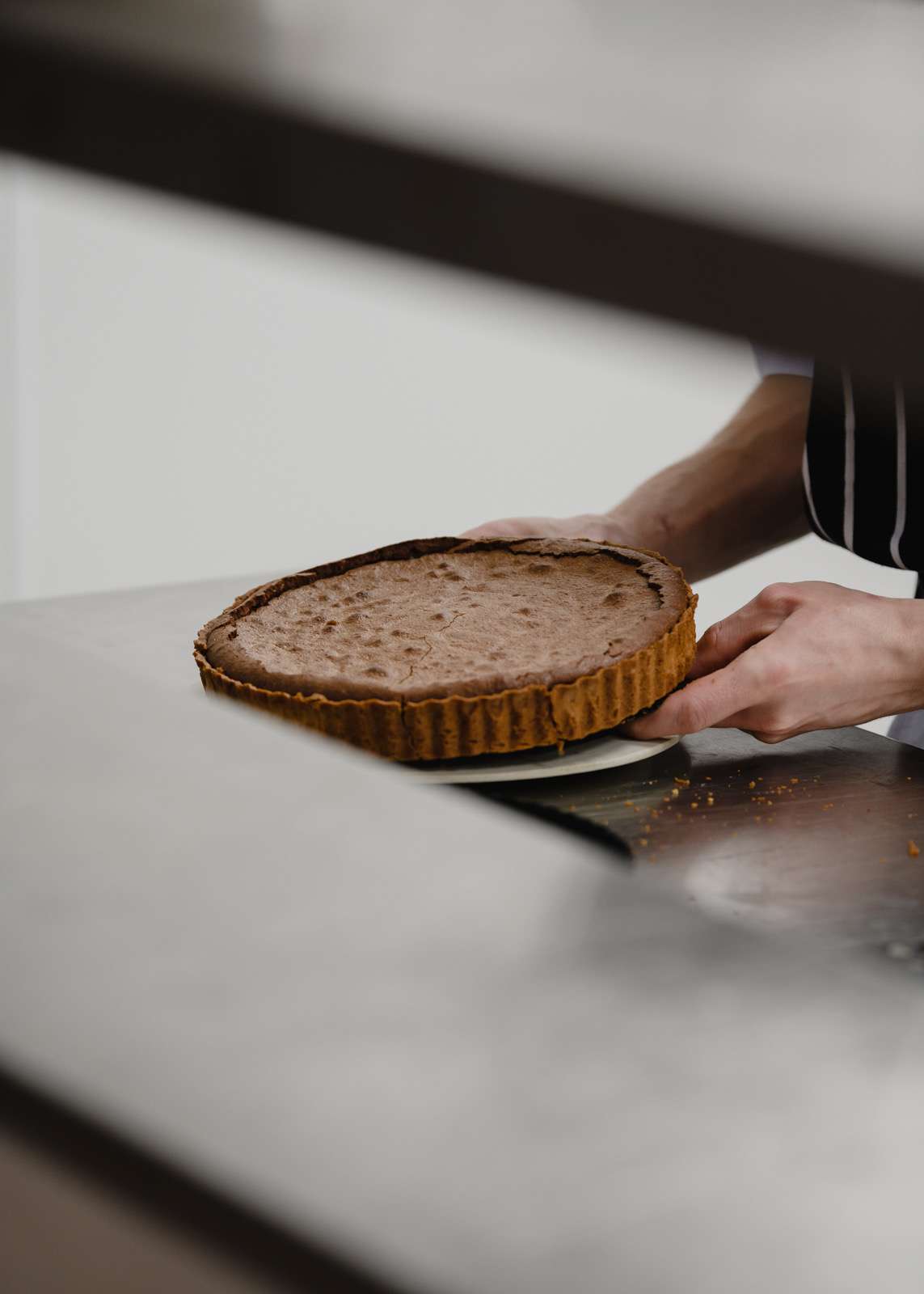
For the pastry
220g flour
80g icing sugar
30g almond flour
1g salt
130g butter
1 small egg
For the chocolate filling
300g dark chocolate, chopped into small pieces
200g butter, cubed
5 eggs
20g sugar
100ml water
2g salt
Sieve the flour, 30g of the icing sugar, almond flour and salt into a bowl. Meanwhile, in another bowl, beat the butter with the remaining icing sugar until white and creamy. Add the dry ingredients and mix until combined.
Add in the eggs and combine without overworking the dough. Reserve in the fridge until chilled and then roll in between two sheets of baking paper.
Cover your tart case with the pastry, applying a little pressure on to the corners, prick it with a fork and put it in the freezer. Once frozen, preheat the oven to 180 degrees Celcius and bake from frozen for 12 minutes until golden.
To make the filling, combine half the sugar and the eggs and whisk until fluffy (about five minutes with an electric mixer). In a saucepan, heat the butter, stirring continuously until it browns, reaching 126 degrees Celcius on a kitchen thermometer. Take off the heat and reserve.
In another pan, heat the rest of the sugar with the water and heat until it becomes syrup, reaching between 108 and 113 degrees Celcius. Pour this on to the brown butter and mix, then add the chocolate and mix again until it’s melted.
Fold the chocolate mix through the beaten eggs until fully combined. Pour it into the tart case and bake at 180 degrees Celcius for approximately 15 minutes, or until there is a firm wobble.
Serve warm, alongside your favourite ice cream.
